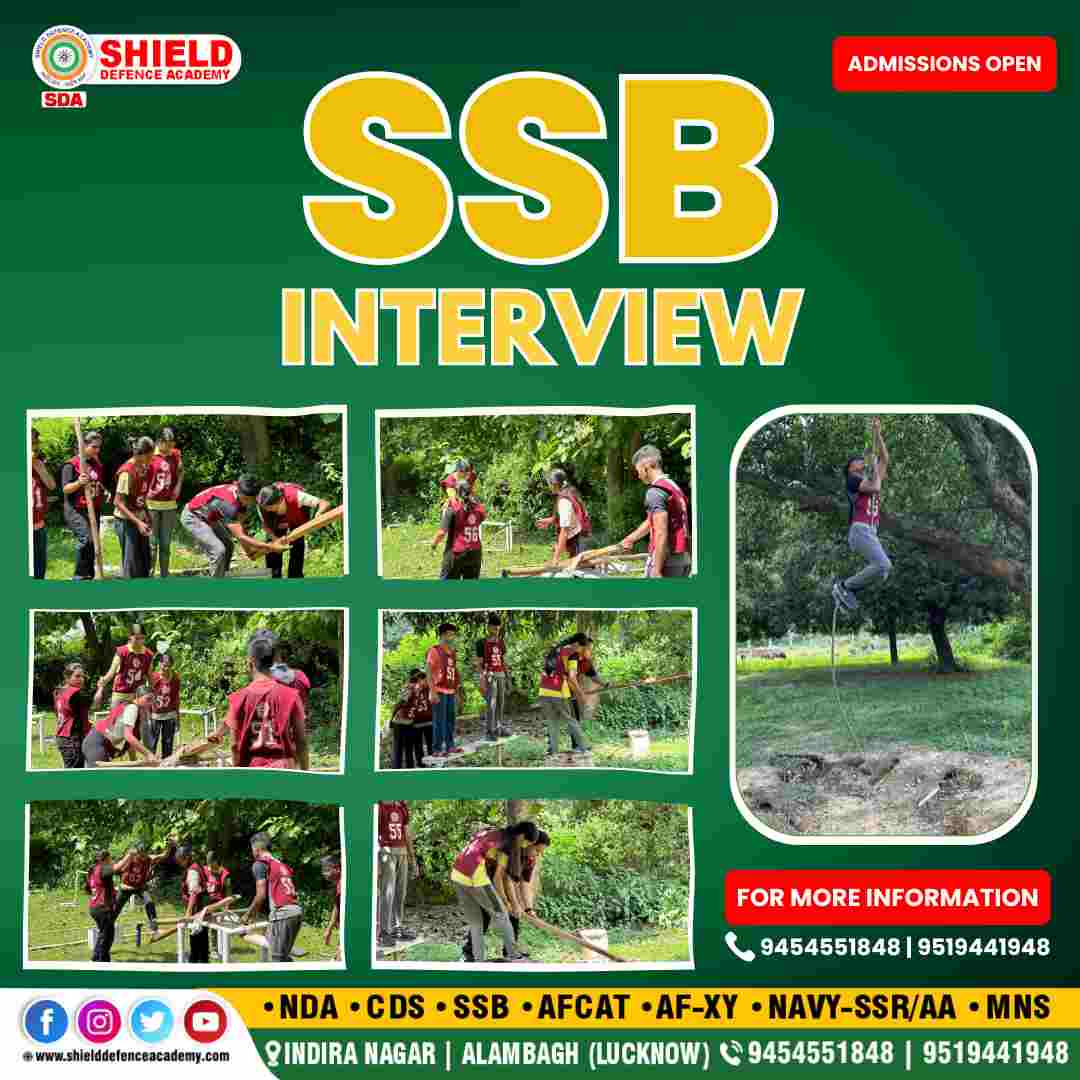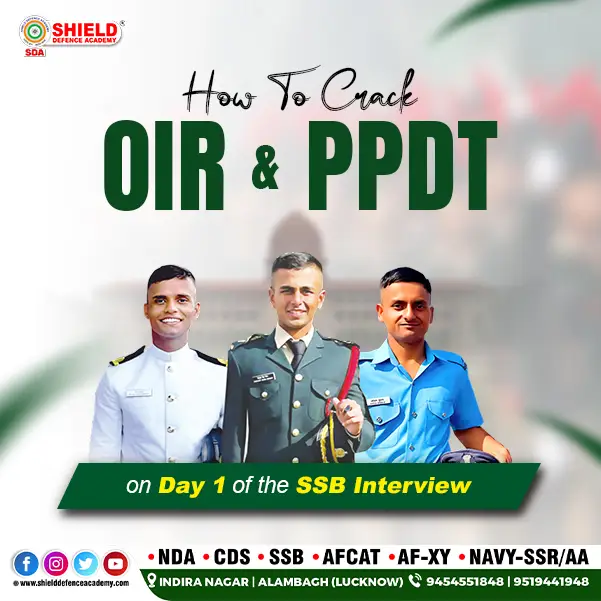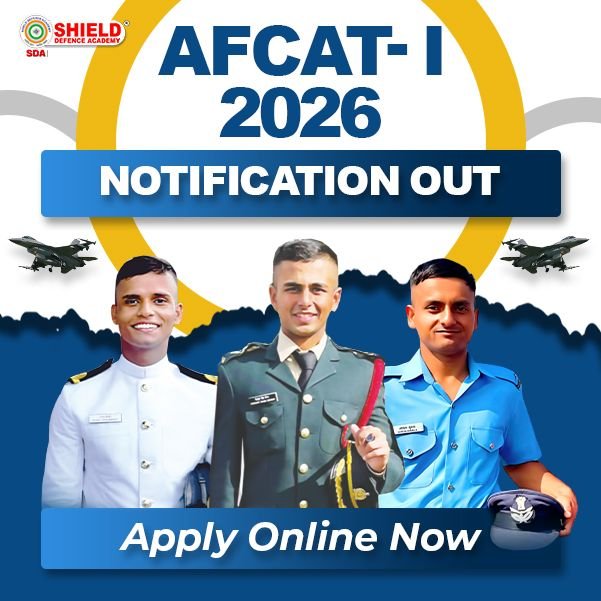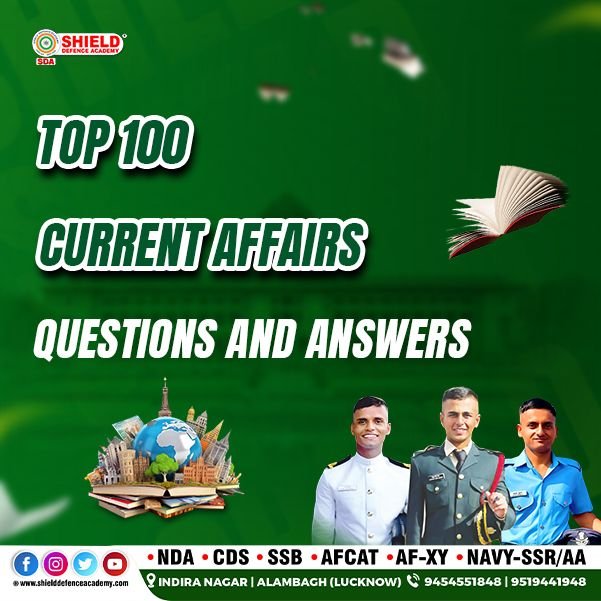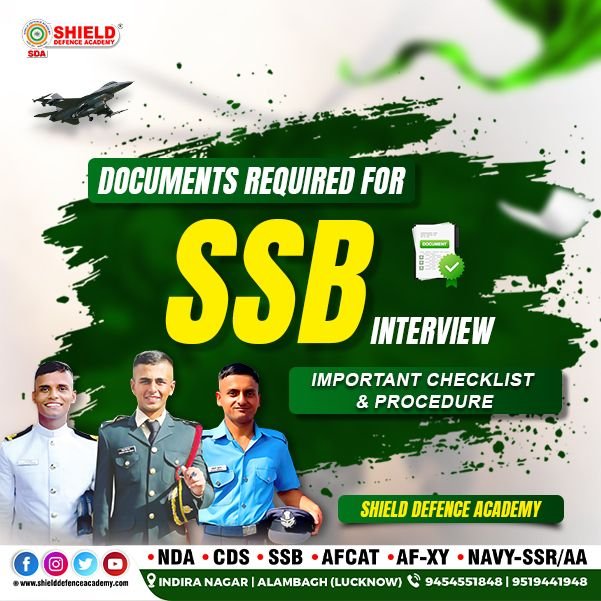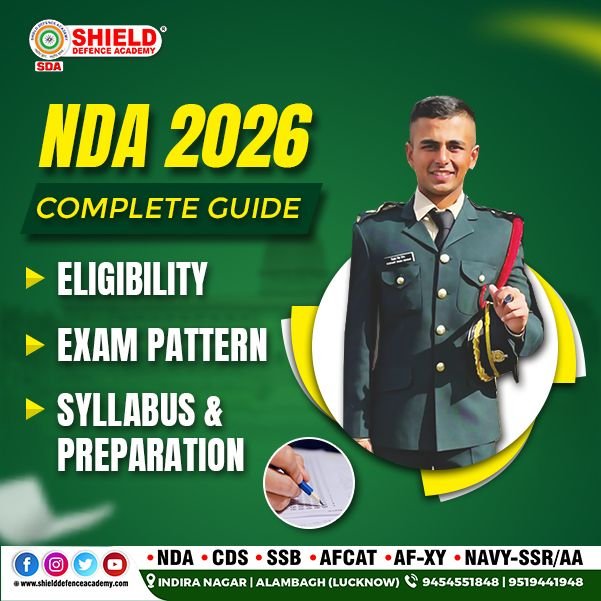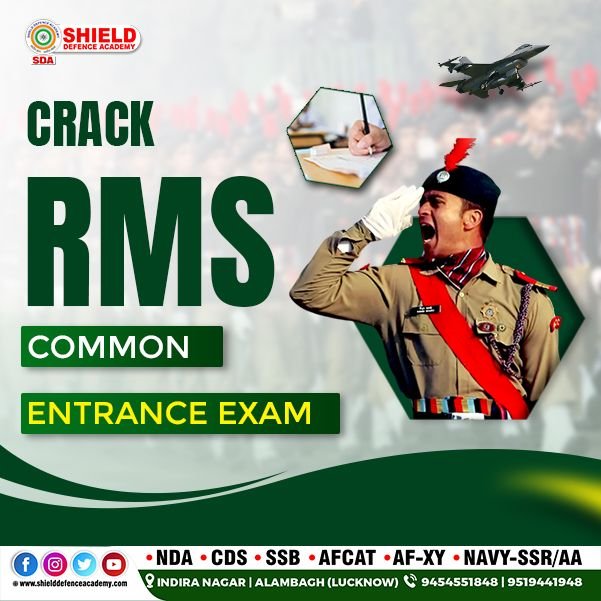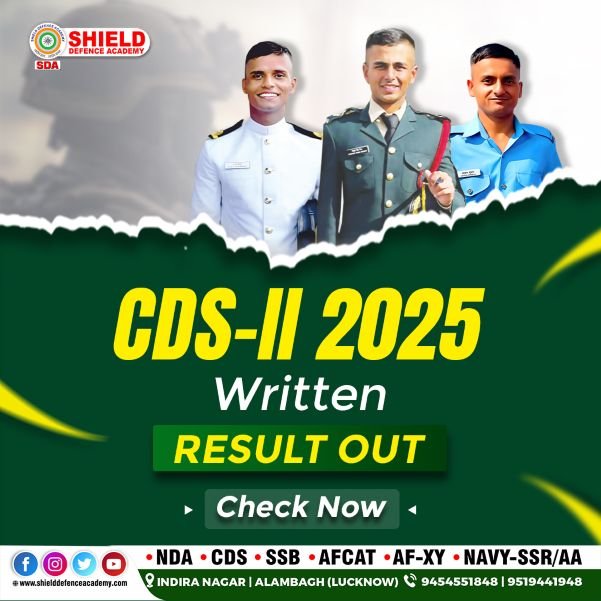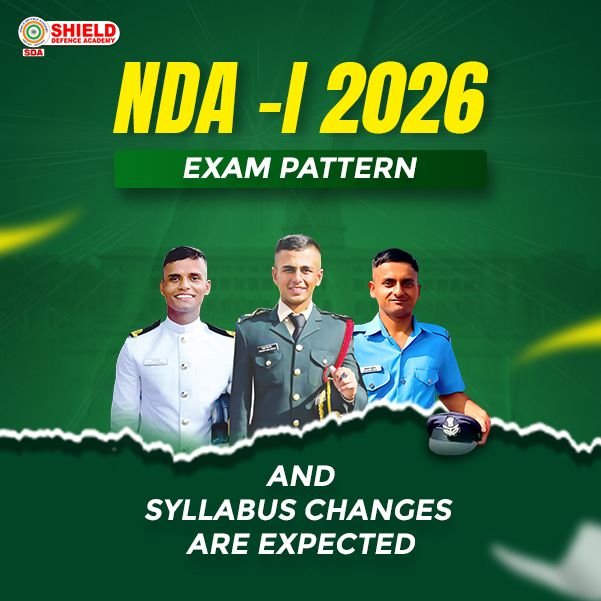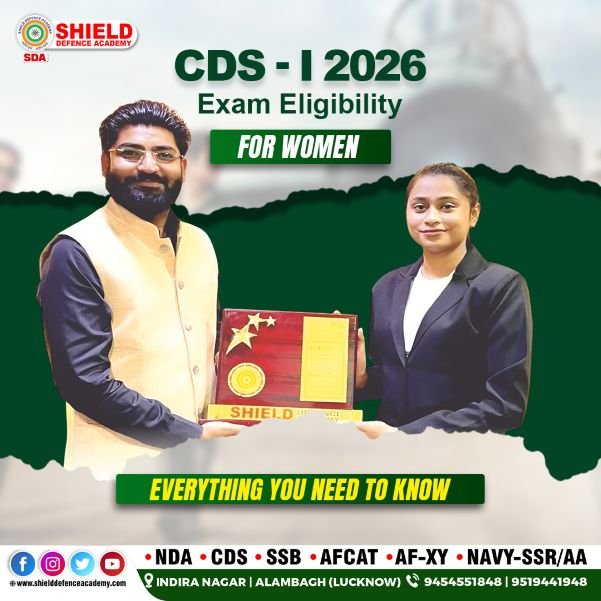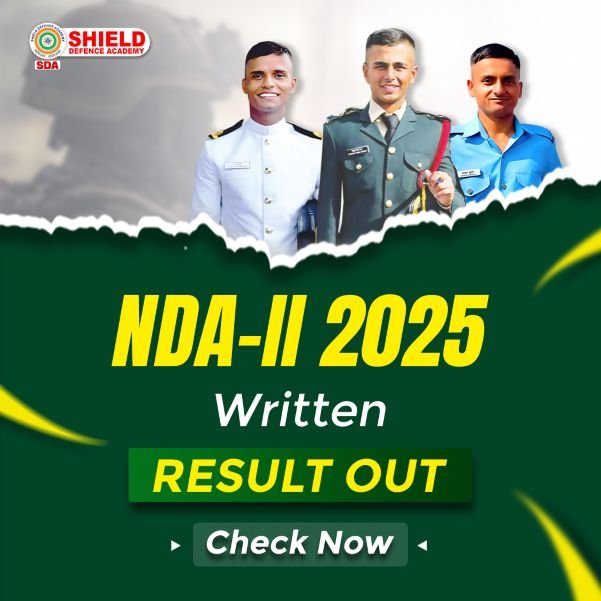SSB Interview: A Journey towards Your Dream
The SSB Interview is more than just a test—it’s a life-changing experience for those who aspire to serve the nation. From the moment you step into the interview process, every day presents a new challenge, revealing your true potential. It’s not just about your knowledge, but your courage, leadership, and character.
Day by day, candidates face assessments that shape their destiny. Whether it’s psychological testing, group tasks, or the personal interview, each stage is designed to uncover the hero within you. This journey, though intense, is a stepping stone to your dreams.
Get ready to explore the day-wise SSB process, and feel empowered to take that brave step toward your future in the armed forces. Every day counts. Every moment is a chance to shine.
What is the SSB Interview?
The SSB (Services Selection Board) Interview is not just an ordinary interview—it’s the gateway to fulfilling a dream cherished by countless young hearts who long to serve their country. It’s a rigorous and trans-formative experience, designed to bring out the best in you. Over the course of five intense days, your leadership skills, mental toughness, and true personality are put to the test.
This interview isn’t about simple questions and answers; it’s about discovering who you really are. It challenges your abilities, your resilience, and your will to overcome. Each test, each task, every interaction is a step closer to realizing your dream of donning the uniform, standing tall with pride, and becoming a part of the legacy that protects our nation.
The SSB Interview is more than a selection process—it’s a journey of self-discovery and a test of your determination to serve something bigger than yourself.
SSB Interview 2024 Overview
The SSB Interview 2024 is more than a mere test—it’s the gateway to your future as an officer in the Indian Armed Forces. This prestigious selection process stands as a beacon of hope for those whose hearts burn with a desire to serve their motherland. Every year, thousands of aspirants strive for this honor, but only the most determined, focused, and resilient make it through.
In 2024, the SSB Interview process continues to challenge the brightest minds and bravest spirits across the nation. Over the course of five days, candidates will undergo various assessments—from psychological tests and group tasks to personal interviews and outdoor activities—each designed to evaluate leadership, intellect, and emotional strength.
This year, more than ever, the competition is fierce, but so is the opportunity to transform your life. The SSB Interview is not just about getting selected; it’s about stepping into a world of discipline, honor, and selflessness. The journey will test your limits, but it’s also a journey toward greatness. Embrace the process, trust your abilities, and let 2024 be the year you achieve your dream!
SSB Interview Rounds: The Gateway to Greatness
The SSB Interview rounds are more than just stages in a selection process—they are milestones on your journey toward becoming a defender of the nation. Each round holds the power to reveal your inner strength, leadership qualities, and resilience, shaping you into the person you are meant to be.
From the moment you enter the selection board, the journey begins with the Screening Test, where your sharp thinking and quick reflexes are put to the test. Passing this stage brings you closer to the dream, leading you to the next step—the Psychological Tests. Here, the focus shifts to understanding your true character, your emotional intelligence, and how you navigate challenges under pressure.
The Group Testing Officer (GTO) rounds demand teamwork, physical strength, and mental endurance. It’s in these moments that your leadership skills are truly tested as you stand tall among your peers, working together to achieve success. And finally, the Personal Interview—an opportunity to speak your heart out, share your story, and convince the board of your passion and commitment to serve the country.
Each round is a test of your courage and determination, a path that leads to greatness. The SSB Interview rounds don’t just assess you—they transform you. With every challenge you face, you get closer to wearing the uniform and standing proud as a protector of the nation.
SSB Interview Procedure
The SSB Interview procedure is not just a selection process—it’s a journey of heart, grit, and transformation. Every moment spent in the SSB center brings you closer to your dream of serving the nation, testing not only your intellect but the very essence of who you are. This procedure is designed to dig deep into your character, your courage, and your ability to lead.
Five Days SSB Interview Procedure Details
Day 1: Screening,
Day 2: Psychological Testing,
Day 3 and 4: Group Testing Officer (GTO) Tasks
Day 5: Personal Interview & Conference
The 5-day SSB Interview is a life-changing experience that tests not only your knowledge and skills but also the depth of your courage, leadership, and determination. Every day, every challenge brings you one step closer to fulfilling your dream of wearing the uniform and serving the nation. Here’s how the journey unfolds:
Day 1: Screening Test
The first day is your gateway to the selection process. It begins with two key tests: the Officer Intelligence Rating (OIR) test and the Picture Perception and Description Test (PPDT). You will face verbal and non-verbal reasoning questions, followed by narrating a story based on a picture shown to you. This day is all about quick thinking and clarity. Passing this stage allows you to continue the journey.
Day 2: Psychological Tests
On this day, your mind and emotions are put to the test. The psychological tests consist of the Thematic Apperception Test (TAT), Word Association Test (WAT), Situation Reaction Test (SRT), and Self-Description Test (SD). These tests dive deep into your subconscious, revealing your personality, decision-making, and how you handle pressure. It’s not just about being clever—it’s about being authentic and mentally tough.
Day 3 & 4: Group Testing Officer (GTO) Tasks
these are two of the most crucial days of the SSB Interview. In the GTO tasks, you’ll be tested for your teamwork, leadership, and physical stamina. From group discussions and military planning exercises to group obstacles and the command task, this phase is where your ability to work with others and lead through challenges comes to the forefront. You’ll face tough physical and mental tasks, but it’s also an opportunity to inspire and guide others.
Day 5: Personal Interview & Conference
The final day is your chance to leave a lasting impression. In the Personal Interview, you’ll have a one-on-one conversation with the interview panel, sharing your aspirations, experiences, and why you’re determined to serve. This is where you speak from the heart and demonstrate your passion and commitment. Afterward, during the Conference, all assessors will discuss your performance and decide if you’ve made the cut.
The SSB Interview process is an extraordinary test of heart and soul. Every moment is a chance to showcase your dedication, resilience, and leadership. These five days are not just about selection—they are a transformation, molding you into the leader you were always meant to be. Keep faith in yourself and trust the process, for this is where dreams come alive.
SSB Day-1: Reporting Day – The First Step toward Your Dream
The excitement and anticipation on Day-1 of the SSB Interview, known as the Reporting Day, are unlike anything else. As you arrive at the selection center, you can feel the energy around you—a sense of purpose shared by everyone present. This day marks the beginning of a journey that could change your life forever.
As you report to the center, the atmosphere is filled with nervous smiles, firm handshakes, and the unspoken bond of those who share the same dream. The first step is the documentation process, where your hard work, dedication, and preparation start to feel real. This is where you officially enter the selection process. The feeling of standing among hundreds of aspiring officers, each with the same burning desire to serve, ignites a fire inside you.
After registration, you’re given your Chest Number, the identity you’ll carry throughout the SSB. It’s not just a number—it’s a symbol of your determination, representing your journey from this moment forward. The briefing session follows, where the officers explain the upcoming tests and procedures. This is your chance to take it all in and mentally prepare for the challenges that lie ahead.
But Day-1 is more than just formalities; it’s the day when hope, excitement, and ambition truly come alive. As you settle in and interact with your fellow candidates, you realize you are now a part of something bigger—a chance to prove yourself, not just to others but to yourself.
The Reporting Day is the first step on the path to greatness, a day when dreams start to take shape, and the vision of serving your nation in uniform becomes closer than ever before.
Officer Intelligence Rating (OIR) Test: The First Challenge of Leadership
The Officer Intelligence Rating (OIR) Test is your very first challenge in the SSB Interview process—a moment where your mental agility and reasoning abilities come to life. As you sit for this test, surrounded by fellow aspirants, the excitement is electric. This test is not just about solving questions; it’s about proving that you have the sharpness, focus, and intellect required of a future leader in the armed forces.
The OIR Test is divided into two sections: verbal and non-verbal reasoning. These questions challenge your ability to think quickly and logically under pressure. Every question answered is a step toward demonstrating your ability to lead with clarity and precision. It’s not simply about getting the right answers—it’s about showing how fast and effectively you can adapt and find solutions.
As you work through the puzzles, sequences, and word problems, you can feel the weight of your dream resting on your shoulders. But this pressure doesn’t break you—it fuels you. This test is the first hurdle in a long journey, but it’s also the moment when you prove to yourself that you are ready for the road ahead.
The OIR Test may be brief, but its significance is immense. It sets the tone for the challenges to come, and how you face it shows the board your potential to think like an officer. With each answer, you move one step closer to the uniform, to a life of honour, courage, and service.
Picture Perception and Description Test (PPDT): Where Imagination Meets Leadership
The Picture Perception and Description Test (PPDT) is not just an assessment—it’s a powerful test of your imagination, observation, and leadership potential. As the image flashes before your eyes, it’s up to you to see beyond what’s visible, to interpret a story that reflects not only the scene but also your own values and qualities.
This moment is both thrilling and nerve-wracking. The picture shown is often hazy, ambiguous, or open to many interpretations, but that’s the beauty of the PPDT. It’s not about what’s obvious—it’s about how you think, how you perceive the world, and how quickly you can craft a meaningful narrative from just a glimpse.
In just a few minutes, you must carefully observe the image, understand its essence, and create a story. But it’s not enough to just tell a story—you must become the leader in it. The characters, their actions, their challenges, and their solutions must reflect leadership, courage, and problem-solving. Your story must show not just imagination but vision—the ability to guide people, inspire them, and overcome adversity.
Once the story is written, the challenge intensifies as you narrate it confidently to the group. Here, your communication skills are on display, as is your ability to stand out as a leader. It’s a moment to assert yourself, speak with clarity, and defend your perspective in a discussion with others, while respecting their views.
The PPDT is more than a test—it’s a window into your mind and heart. It challenges you to think quickly, express yourself clearly, and lead with confidence, all under the pressure of time. This test is where your potential to become an officer truly begins to shine, as you craft a story that not only reflects the picture in front of you but the leader within you.
Story Narration and Discussion Test: You’re Voice, Your Leadership
The Story Narration and Discussion Test is a pivotal moment in the SSB Interview process—a chance to step into the spotlight and share your vision with your peers. After crafting your story based on the PPDT, you now have the opportunity to bring it to life, not just as a personal narrative but as a shared experience that reflects your ability to lead and inspire.
As you prepare to narrate your story, a whirlwind of emotions swirls within you—excitement, nervousness, and determination. This is your moment to shine, to show the selection board who you truly are. You take a deep breath, steady your thoughts, and begin to share your narrative with confidence. Each word carries weight, revealing your character, values, and your capacity for leadership.
Once your story is shared, the discussion begins. This is where the real magic happens. As you engage with your fellow candidates, the atmosphere shifts from individual presentations to a collaborative exchange of ideas. The challenge is not just to defend your story, but to listen, respect differing viewpoints, and find common ground. This is the essence of leadership—being able to inspire others, embrace diverse perspectives, and guide a group toward shared solutions.
In this space, you have the opportunity to demonstrate your critical thinking, problem-solving skills, and the ability to remain calm under pressure. The discussion is not just about winning an argument; it’s about fostering teamwork, empathy, and respect. It’s a test of how you can rally others around a common goal and lead with conviction.
The Story Narration and Discussion Test is a defining moment in your SSB journey. It’s a chance to showcase your ability to articulate your thoughts, engage with others, and inspire those around you. Embrace this moment with passion and authenticity, for it is here that you prove not only your potential as an officer but your readiness to serve and lead with heart.
Elimination: A Test of Resilience and Determination
In the SSB Interview process, the word “elimination” carries a weight that can feel heavy on the heart. It’s a moment that many fear—a point where aspirations are put to the ultimate test. But it’s essential to remember that elimination is not the end; rather, it is a part of the journey, a chance to reflect on your experiences and grow.
As the results are announced, emotions swirl—anticipation, anxiety, and hope. For some, it will be a moment of triumph, the sweet taste of success as they advance in the process. For others, it can feel like a devastating blow, dreams seemingly slipping away. It’s in this moment that you must dig deep and embrace resilience.
Elimination is not a reflection of your worth or potential. It’s a reminder of the challenges that come with pursuing greatness. Every individual who walks through those SSB gates has their own unique strengths and stories. If you face elimination, take a moment to honor the hard work you’ve put in, the courage you’ve shown, and the lessons you’ve learned along the way.
This journey is not solely about the destination; it’s about growth, self-discovery, and understanding what it means to fight for your dreams. Many who experience elimination use it as a catalyst for improvement, fueling their determination to return stronger, wiser, and more prepared for the next opportunity.
In the face of elimination, let your spirit rise. Every setback can become a stepping stone toward success. Embrace the journey ahead, learn from every experience, and remember that the pursuit of your dreams is a path filled with twists and turns. Whether you advance or not, know that your journey has just begun, and your story is far from over.
SSB Day 2: Psychology Test- SSB Interview
Day 2 of the SSB Interview marks a significant shift in your journey—a day dedicated to the Psychology Test, where the spotlight is firmly on your mental resilience and emotional intelligence. This day can feel like a rollercoaster, filled with anticipation and self-reflection as you delve into the depths of your psyche.
The Psychological Tests consist of several components: the Thematic Apperception Test (TAT), Word Association Test (WAT), Situation Reaction Test (SRT), and Self-Description Test (SD). Each of these tests is designed not just to evaluate your thoughts and feelings but to uncover the essence of who you are.
As you face the TAT, you’ll be shown a series of images, each sparking a unique story within you. In these moments, you are challenged to weave narratives that showcase your values, leadership qualities, and problem-solving abilities. This is your chance to express your creativity and reveal your capacity to inspire and motivate others through the characters and scenarios you create.
Next comes the WAT, where you will be presented with a series of words, and your task is to respond with the first thought that comes to your mind. This rapid-fire exercise tests your instincts and reveals your subconscious associations. Your responses can reveal not just your thinking style but also how you perceive the world around you.
The SRT presents you with various situational challenges that require quick thinking and effective decision-making. Each scenario demands your attention and empathy, asking you to think like a leader while considering the welfare of others. Here, you demonstrate your ability to remain composed under pressure and your readiness to tackle real-world challenges.
Finally, the Self-Description Test (SD) invites you to reflect on yourself and share how you believe others perceive you. This test requires humility, introspection, and honesty. It’s an opportunity to express your strengths, acknowledge areas for growth, and showcase your willingness to learn and improve.
Day 2 is more than just an assessment; it’s a profound journey into your mind and heart. It encourages you to confront your thoughts, articulate your feelings, and embrace your true self. This day tests your resilience, pushing you to explore your emotional landscape and showcase the qualities that make you a potential leader.
As you navigate through the psychological tests, remember that every response, every story shared, is a step toward understanding yourself better and preparing for the challenges that lie ahead. Embrace this day with courage and authenticity, for it is a crucial part of your journey toward becoming an officer who leads with heart and conviction.
Thematic Apperception Test (TAT): Unleashing the Power of Your Imagination
The Thematic Apperception Test (TAT) is a profound and introspective experience, inviting you to dive deep into your subconscious and express your inner world through storytelling. As you sit before a series of evocative images, each one telling its own silent tale, you feel a wave of emotions—curiosity, excitement, and perhaps a hint of anxiety. This test is not just about the pictures; it’s about how you perceive them, the stories you weave, and what they reveal about you.
As you gaze at the first image, your mind begins to race, ideas forming and characters emerging. In this moment, you have the power to create a narrative that reflects your values, beliefs, and understanding of human emotions. You imagine a scene filled with characters facing challenges, aspirations, and triumphs. Your ability to see beyond the surface and draw connections is put to the test, as you transform a mere picture into a rich tapestry of life experiences.
The beauty of the TAT lies in its open-ended nature. There are no right or wrong answers; it’s about the depth of your imagination and the sincerity of your insights. As you craft your story, you tap into your creativity, channelling your feelings and experiences into the characters’ journeys. Each narrative you share is a glimpse into your heart—a reflection of your dreams, fears, and the qualities that make you a potential leader.
Once you have narrated your story, the real magic unfolds in the discussion that follows. You engage with assessors and fellow candidates, sharing your interpretations and listening to theirs. This collaborative exchange enriches the experience, offering you a chance to see the diversity of thought and perspective. It is here that you realize the power of communication, empathy, and understanding in fostering connections with others.
The TAT is more than just a test; it’s a journey of self-discovery. It challenges you to explore your emotional landscape, confront your beliefs, and articulate your vision. As you immerse yourself in this creative process, you strengthen your ability to lead with empathy and insight. Embrace this opportunity to share your story, for it is a powerful step toward understanding yourself and becoming the leader you aspire to be.
Word Association Test (WAT): A Journey into Your Mind
The Word Association Test (WAT) is a fascinating and intense experience, designed to reveal the nuances of your thoughts and feelings in an instant. As you sit in the assessment room, a sense of anticipation fills the air. The test is simple in concept: you’ll be presented with a series of words, and your task is to respond with the first thought or word that comes to mind. However, the simplicity of this task belies its depth; it serves as a window into your subconscious, reflecting your attitudes, beliefs, and emotions.
When the first word flashes before you, a rush of thoughts and feelings surges through your mind. Each response you give is a glimpse into your inner self—a reflection of your hopes, fears, and values. In those fleeting moments, you grapple with your instincts and your awareness, striving to convey not just a word, but the essence of who you are.
As the words continue to appear, the pressure builds, but it’s also invigorating. You realize that this exercise is a dance between your subconscious and conscious mind—a chance to understand how you connect ideas and emotions. Each word you respond to is a thread that weaves together a tapestry of your experiences, showing the board your thought process and your character.
Throughout the WAT, you may encounter words that provoke strong emotions, prompting you to confront feelings you didn’t even know were there. This can be a powerful moment of self-reflection, revealing not just your reactions but also your capacity for resilience and growth.
The WAT isn’t merely a test; it’s an exploration of your identity. It challenges you to embrace your thoughts, to express them without hesitation, and to engage with the complexity of your emotions. As you navigate through this journey, remember that every response is an opportunity to showcase your true self—your strengths, your vulnerabilities, and your unique perspective on the world.
Embrace the WAT with an open heart and mind, for it is a chance to illuminate the path toward understanding yourself better and to demonstrate the qualities that make you a future leader. Each word you respond to carries the potential to shape your narrative, guiding you on the journey to becoming the officer you aspire to be.
Situation Reaction Exam (SRT)
The Situation Reaction Test (SRT), conducted on SSB Day 2, evaluates a candidate’s quick thinking, decision-making, and emotional stability. Candidates are presented with 60 real-life situations and must respond with spontaneous solutions within 30 minutes. The test gauges how well you manage pressure, tackle challenges, and maintain composure. The focus is on reflecting qualities like courage, responsibility, and adaptability. Your responses should be practical and demonstrate sound judgment, as they reflect how you would handle unforeseen circumstances in a military environment.
Self Description Test
The Self Description Test (SDT), held on SSB Day 2, is a personal introspection exercise where candidates describe themselves based on five key perspectives: how they view themselves, how their parents, teachers, friends, and colleagues see them, and what they aspire to become. This test assesses your self-awareness, values, and emotional intelligence. Responses should be honest and balanced, reflecting qualities such as integrity, leadership, and determination. The SDT offers insight into your personality and helps the assessors understand your motivations and alignment with the qualities expected of an officer.
SSB Day 3 – Group Task 1- SSB Interview
SSB Day 3 – Group Task 1 is a pivotal part of the Group Testing series, where candidates participate in outdoor tasks that assess teamwork, leadership, and problem-solving skills. The first group task usually involves Progressive Group Task (PGT), where candidates must collaborate to overcome a series of obstacles using limited resources like planks, ropes, and logs.
This task tests how well you communicate, contribute ideas, and work within a team under pressure. The assessors observe leadership qualities, adaptability, and cooperation, focusing on how you balance initiative with teamwork. Success in this task requires creativity, logical thinking, and a positive attitude towards group dynamics.
Group Discussion (GD)
The Group Discussion (GD) on SSB Day 3 is an important task that evaluates a candidate’s communication skills, teamwork, and general awareness. During this task, the group is given two topics (one chosen by the group and one assigned by the assessors) to discuss in a structured and time-bound manner.
The focus is on how effectively you express your ideas, listen to others, and maintain a balanced participation in the discussion. It’s not about dominating the conversation, but rather contributing valuable insights, staying respectful of differing opinions, and steering the discussion toward constructive conclusions. The assessors evaluate your clarity of thought, logical reasoning, and ability to influence a group — all vital qualities for future officers.
Group (Military) Planning Exercises (GPE)
The Group Planning Exercise (GPE), conducted on SSB Day 3, is designed to evaluate a candidate’s ability to analyze complex problems, make quick decisions, and collaborate effectively within a team. In this task, the group is presented with a real-life crisis scenario involving multiple problems. Candidates must identify and prioritize the issues, propose practical solutions, and devise a plan of action within a set time.
After individual planning, the group discusses and finalizes a collective solution. The assessors observe leadership, logical thinking, time management, and group dynamics. Success in GPE requires balancing personal ideas with team contributions and demonstrating your ability to handle crises effectively, as expected of a military leader.
Progressive Group Task (PGT)
The Progressive Group Task (PGT), held on SSB Day 3, is an outdoor task aimed at evaluating teamwork, problem-solving skills, and leadership abilities. In this task, a group is presented with a series of four progressively challenging obstacles that they must cross using simple materials like planks, ropes, and logs. The rules restrict direct contact with certain areas (known as “out of bounds”), and teams must creatively navigate the obstacles within these limitations.
PGT assesses how candidates collaborate, contribute ideas, and take initiative. It also highlights leadership qualities, communication skills, and adaptability. Each obstacle increases in difficulty, testing not only physical capability but also mental resilience. Successful candidates demonstrate teamwork, strategic thinking, and a calm, cooperative attitude throughout the exercise.
Group Obstacle Race (GOR)
The Group Obstacle Race (GOR), also known as the snake race, is an energetic and physically demanding task in the SSB interview process. In this challenge, groups compete against each other to cross a series of obstacles while carrying a long, heavy rope (referred to as the “snake”). The task assesses teamwork, physical endurance, coordination, and competitive spirit. It’s not about winning but showcasing your willingness to collaborate, push your limits, and encourage your team through challenging situations.
Half Group Task (HGT)
The Half Group Task (HGT) is a scaled-down version of the Progressive Group Task (PGT) where the group is divided into smaller teams. This task is designed to give the assessors a closer look at each candidate’s problem-solving abilities, leadership skills, and teamwork. With fewer members, each candidate gets more opportunities to contribute ideas and take initiative. The focus is on active participation, intelligent solutions, and fostering group harmony.
SSB Day 4 – Group Task 2- SSB Interview
Group Task 2 continues to assess the candidates’ abilities in outdoor tasks, with more complex challenges designed to test their mental and physical endurance, leadership, and cooperation. This day is crucial as it provides the assessors with deeper insights into how candidates handle pressure, manage group dynamics, and offer innovative solutions.
The Lecturette is a task designed to evaluate your communication skills, confidence, and clarity of thought. Candidates are given a choice of topics, and after a brief preparation time, they must speak on one for 3 minutes. This exercise gauges your ability to organize your thoughts, present ideas clearly, and influence an audience under time constraints. It reflects your general awareness, knowledge, and ability to stay composed while addressing a group.
The Individual Obstacles (IO) task tests your physical fitness, determination, and mental toughness. Candidates are required to complete as many obstacles as possible within a limited time, with each obstacle carrying different points based on difficulty. From rope climbing to jumping over walls, this task reflects your courage, agility, and persistence. Success in IO showcases your willingness to push boundaries and overcome personal challenges.
The Command Task is a leadership-focused test where a candidate is made the leader of a group and asked to solve an obstacle or problem with the help of two subordinates. This task evaluates your leadership qualities, decision-making skills, and ability to guide others under pressure. The key here is how you communicate instructions, inspire cooperation, and strategically navigate challenges. The assessors observe your composure, tactical approach, and resourcefulness as a commander.
Final Group Task (FGT)
The last outdoor exercise, where the entire group works together one more time to solve an obstacle or series of challenges. It’s an opportunity to display unity, coordination, and collaborative problem-solving one final time. By this stage, assessors expect candidates to have grown comfortable working as a team and showcasing leadership when needed. FGT is a cumulative reflection of your teamwork and perseverance.
Personal Interview
A one-on-one session where the interviewing officer assesses your personality, motivation, and suitability for a career in the defense forces. The questions revolve around your personal life, academics, achievements, goals, and knowledge of current affairs. The interview is designed to gauge your honesty, clarity of thought, decision-making ability, and overall officer-like qualities (OLQs). It is a crucial component of the SSB, where being calm, confident, and authentic plays a key role.
SSB Day 5 Conference- SSB Interview
The final stage of the SSB interview process. All assessors – including the GTO, interviewing officer, and psychologist – meet to discuss and decide on the fate of each candidate. Candidates are called in individually and asked a few general questions. The conference is the concluding assessment, and the collective feedback from all assessors determines whether a candidate has displayed the required officer-like qualities (OLQs) to be recommended for selection.
Conclusions: The Journey of SSB Interview
The SSB interview is more than just a test; it is a comprehensive evaluation of a candidate’s personality, leadership abilities, mental and physical endurance, and emotional intelligence. Every task, from group activities like the Group Obstacle Race (GOR) and Progressive Group Task (PGT) to individual assessments like the Lecturette and Command Task, challenges candidates to exhibit officer-like qualities (OLQs). The process is designed not just to test skills, but to see how individuals think, act, and react under pressure, within a team, and in varied situations.
The final stages, such as the Personal Interview and Day 5 Conference, allow assessors to have a holistic view of each candidate. Success in the SSB interview requires self-awareness, courage, adaptability, and a genuine passion for serving in the armed forces. Each task is a stepping stone, building resilience, confidence, and a clear vision of what it means to be an officer.
SSB Interview FAQs
Is SSB Interview tough?
Yes, the SSB interview is considered tough because it thoroughly assesses a candidate’s mental, physical, and emotional qualities over five days. It is not just about knowledge or physical fitness but also about evaluating officer-like qualities (OLQs) such as leadership, teamwork, decision-making, and problem-solving abilities. Each task, whether in group discussions, psychological tests, or outdoor activities, challenges candidates to stay composed, think critically, and act decisively under pressure.
Where is the SSB interview held?
The SSB interview is conducted at various Service Selection Board (SSB) centers across India, depending on the branch of the Armed Forces. For the Indian Army, centers are located in places like Allahabad, Bhopal, and Bangalore. The Indian Navy conducts interviews at Bangalore, Bhopal, Visakhapatnam, and Kolkata. For the Indian Air Force, the centers are in Dehradun, Mysore, Varanasi, and Gandhinagar. These centers assess candidates aspiring to join the armed forces and are equipped to conduct the five-day selection process, evaluating officer-like qualities and leadership potential.
How many days does the SSB interview take
The SSB interview is a comprehensive five-day selection process. Each day involves different assessments, including psychological tests, group tasks, individual obstacles, and a personal interview. The process evaluates a candidate’s mental, physical, and emotional fitness for a career in the armed forces.
Where is the NDA SSB Interview held?
The NDA SSB interview is primarily conducted at various Service Selection Board (SSB) centers across India. Key locations include Allahabad, Bhopal, Bangalore, and Kolkata. These centers assess candidates aspiring to join the National Defence Academy (NDA) through a rigorous selection process over five days.
